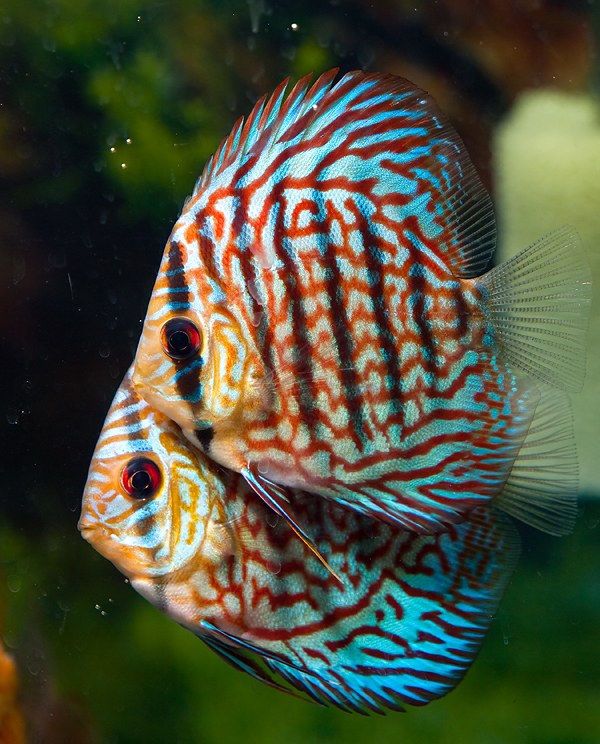Transportation may result in physiological changes in fish from changes in behaviour during transportation. Letting the fish rest after transportation is useful, but only if the fish is allowed to acclimatize to its new environment.
In the ornamental fish trade, live fish are transported in plastic bags. There are several problems with this method. Fish during transport are subject to changes to temperature, depletion of dissolved oxygen, accumulation of nitrogenous wastes and increased levels of carbon dioxide and acidity. Temperature and oxygen problems are easily solved by adding bags of hot or ice water and using pure oxygen instead of regular air. It would seem that during transport, fish consumed three times the amount of oxygen they would normally consume under normal circumstances. Fish are starved one to two days prior to shipping to decrease the amount of ammonia produced while the fish are in the bags. This method does decrease the amount of ammonia produced by small fish, but larger fish produced more ammonia than expected. This is probably due to the larger weight of the fish. This discrepancy may be because the allowed starvation time is not enough for the larger fish to empty their stomachs.

Courtesy Yoko Dam
Current industry practice in ornamental fish transport involves conditioning the fish for packaging, quality control of the fish, controlling the temperature of water used in transport, control of metabolic wastes, and adding salts to the water. The system is designed to minimize shipping costs, resulting in high loading density of fish. Stress resistance is a neglected yet important factor. If stress resistance and stress responses could be lowered, this would result in fish that are better able to survive shipment and the post-shipment recovery period. Nutritional prophylaxis can improve both stress resistance, lower stress responses, and increase disease resistance. These goals can be reached by feeding the fish a diet supplemented with vitamin C. Current practice in reducing metabolic wastes during transport is insufficient. High ammonia levels and unstable pH contribute to post-shipment mortality.


It’s interesting to see the different perspectives on moving! For anyone considering a move, especially across provinces, finding the right support is crucial. I highly recommend checking out this interprovincial moving service https://moverscrosscanada.ca/services/interprovincial-moving-services/. They provide excellent assistance that can help make your relocation much smoother, allowing you to focus on settling into your new space!